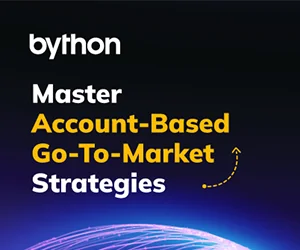Distributed ledger technology (DLT), commonly known as blockchain, is a game-changer for global supply chains. It offers innovative ways to store data and automate operations across stakeholders securely. With the COVID-19 pandemic and ongoing geopolitical tensions exposing new supply chain risks, blockchain has the potential to build more resilient upstream and downstream logistics capabilities.
6 Ways Blockchain Transforms Supply Chain Management?
Blockchain transforms SCM in 10 notable ways. Supply chain leaders can harness this technology to:
1. Immutably store supply chain data
When you record transactions or data entries on a blockchain, you add them to a series of blocks, forming a chain. Each block contains a unique cryptographic hash of the previous block, creating a link that makes the entire chain immutable.
This means that once a transaction has been added to the blockchain, it is practically impossible to alter or delete it without the consensus of most network participants.
Cryptographic security mechanisms ensure that any attempt to tamper with the data will be immediately detected, preserving the integrity of your supply chain records.
2. Automate vendor contracts
Smart contracts are self-executing codes stored on the blockchain that automatically execute predefined actions when certain conditions are met. As you deploy smart contracts within your supply chain, you’re essentially creating rules and agreements that are enforced and executed autonomously.
For example, you can program a smart contract to release payment to a supplier once a shipment is received and verified by a predetermined set of criteria. By removing the need for intermediaries and manual intervention, blockchain streamlines processes, reduces costs, and minimizes the potential for errors or disputes in your supply chain transactions.
3. Maintain an SCM audit trail
Blockchain enables traceability and provenance tracking by providing a transparent and immutable record of each product’s journey through the supply chain.
Recording transactions related to the production, packaging, shipping, and distribution of your products on the blockchain creates a tamper-proof audit trail. This allows you and other stakeholders to trace every item’s origin and movement.
By scanning a product’s unique identifier, such as a QR code or RFID tag, you can retrieve detailed information about its manufacturing process, raw material sourcing, quality checks, and shipping routes. This level of transparency helps you ensure compliance and enhances consumer trust and brand reputation.
4. Gain visibility while hiding crucial data
With blockchain technology, you gain real-time visibility into your supply chain operations. DLT allows you to securely share data with authorized participants while maintaining confidentiality and data integrity.
By leveraging blockchain-based supply chain platforms, you can access a comprehensive view of critical metrics – inventory levels, production status, shipping schedules, etc. – across your entire supply chain network. This granular level of visibility enables you to identify inefficiencies, anticipate demand fluctuations, and optimize resource allocation in real time.
As a result, you can enhance your supply chain’s overall efficiency and responsiveness.
5. Reduce dependence on a single system or authority
Blockchain operates on a decentralized network of nodes, each maintaining a copy of the entire blockchain ledger. Participating in a blockchain-based supply chain makes you part of this decentralized network, eliminating the need for a central authority to validate and record transactions.
Instead, transactions are verified and added to the blockchain through a consensus mechanism, such as proof-of-work or proof-of-stake, which ensures the integrity and security of the network.
By decentralizing control and data distribution, it reduces the risk of a single point of failure. This enhances your resilience against cyber-attacks or system failures, and fosters trust among supply chain participants.
6. Manage risks better
You can leverage blockchain tools to monitor key risk indicators, like supplier performance, demand fluctuations, geopolitical events, and natural disasters.
These platforms’ analytics features can analyze historical data and identify patterns or trends indicating impending risks or disruptions. Based on this, smart contracts automate risk mitigation strategies – for example, alternative sourcing, inventory optimization, or contingency planning – based on rules and triggers that you’ve predefined.
Challenges and Considerations for Implementing Blockchain in Supply Chain Management
Like most enterprise-grade blockchain applications, SCM blockchain technology poses a few unique problems you must address.
Challenge 1: Scalability
The blockchain network must be able to handle an increasing number of transactions as your supply chain grows. Traditional blockchain networks like Ethereum often face scalability issues due to limited throughput and latency.
You can address scalability issues by implementing scaling solutions such as sharding, which partitions the blockchain network into smaller, more manageable shards that can process transactions independently.
Utilizing layer two solutions like state channels or sidechains to offload transactions from the main blockchain reduces congestion. Also, explore alternative platforms designed for scalability – such as enterprise-focused Hyperledger Fabric or Corda.
Challenge 2: Interoperability
Different blockchain networks or systems should communicate with each other and exchange data seamlessly. Interoperability is crucial for integrating multiple systems, including legacy ones, in a complex supply chain ecosystem.
To achieve this, standardize data formats and protocols to ensure compatibility between blockchain networks and systems. Adopt industry-wide standards such as GS1’s Electronic Product Code Information Services (EPCIS) for supply chain data exchange.
To facilitate data exchange between disparate blockchain networks, you can implement middleware solutions or interoperability protocols like Interledger Protocol (ILP) or Cosmos.
Challenge 3: Cost
Implementing and maintaining a blockchain-based supply chain solution can involve significant costs and complexities – including infrastructure setup, development, integration, and ongoing maintenance. Don’t underestimate these expenses at the project planning stage.
Considering all of these factors, evaluate the Total Cost of Ownership (TCO) of blockchain implementation. You can leverage cloud-based blockchain platforms or Blockchain-as-a-Service (BaaS) offerings to reduce upfront infrastructure costs and accelerate deployment. It can also be a good idea to leverage open-source blockchain frameworks and libraries since they streamline development and reduce customization efforts at very low costs.
Conduct thorough cost-benefit analysis and prioritize use cases with the highest potential ROI to justify investment in blockchain technology in supply chain management.
Challenge 4: Compliance
Regulatory compliance is a critical consideration in supply chain management. Your blockchain implementations must adhere to industry-specific rules governing data privacy, intellectual property rights, trade compliance, and consumer protection.
Stay informed about the regulatory requirements applicable to your supply chain operations, such as the FDA’s Drug Supply Chain Security Act (DSCSA) or EU’s MiFID II for financial transactions.
When choosing a blockchain solution, ensure it has built-in compliance features – such as audit trails, data provenance tracking, and regulatory reporting capabilities. Collaborate with legal experts to ensure that the implementation complies with applicable laws in all your jurisdictions.
How Supply Chain Organizations are Utilizing Blockchain Today
Despite being a largely experimental technology, companies have adopted blockchain to establish an early mover advantage. For instance, Deloitte works with medical companies, logistics providers, and manufacturers to combine IoT and blockchain for a cyber-physical supply chain management system. The company is partnering with Nexxiot to develop these solutions.
Similarly, a pesticide company is considering using blockchain to alleviate the security, trust, and cost issues of supplying a perishable product. Since supply chain management is a data-heavy function, it is a prime candidate for blockchain implementation – whose most compelling USP is its ability for flexible data exchange without compromising privacy, security, or confidentiality.
Thanks to these qualities, enterprises operating—or participating in—complex, multi-layered supply chains should definitely consider implementing blockchain to level up their digital transformation journey.




